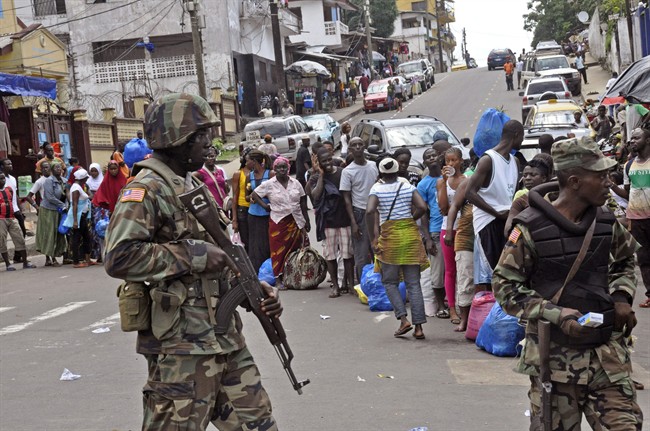“It’s the children who distress me most.” — MSF nurse Anja Wolz

Today the Ebola story appears to be all about numbers – big numbers. The World Health Organization released a plan for bringing the seemingly unstoppable Ebola outbreak in West Africa to an end.
- It estimates the work will cost US$490 million.
- It suggests by the time the outbreak is over, more than 20,000 people may have contracted the virus. For context, the largest previous outbreak occurred in 2000 in Uganda, when 425 people were infected.
- It sets a goal of stopping the outbreak in six to nine months. It’s not a projection or a promise — the WHO is calling it a goal. It’s a telling word choice.
- It estimates 3,580 international and national personnel will be needed to make this all work.
These are numbers unlike anything the world has ever seen before in relation to Ebola, and frankly few in public health would have ever dreamed — nightmared — of a scenario like what the world faces now with the outbreak in Guinea, Sierra Leone and Liberia.
(Fingers are still crossed that Nigeria has contained the spread there, sparked by an infected government official from Liberia who travelled to Nigeria. So far Nigeria has recorded 17 cases, including the Liberian man, and six deaths — all from that one importation.)
The plan, which the WHO calls a roadmap, is critically important work. But it’s hard to take in and it tells a story in numbers.
- ‘Shock and disbelief’ after Manitoba school trustee’s Indigenous comments
- Canadian man dies during Texas Ironman event. His widow wants answers as to why
- Several baby products have been recalled by Health Canada. Here’s the list
- ‘Sciatica was gone’: hospital performs robot-assisted spinal surgery in Canadian first
Ultimately, the Ebola outbreak in West Africa is a story about people. The people whose families and communities are being wiped out and the hugely courageous people who are trying to save lives and stop the spread of this hellish virus.
Anja Wolz is in the latter group of people. A nurse with Medecins Sans Frontieres (Doctors Without Borders), Wolz is working at Kailahun, Sierra Leone. She has written a first-person account of the gruelling and relentless work the national and international health-care workers fighting the outbreak face day after day after day.
She says the worst thing about the work is dealing with the children — orphaned, confused, sick and a heartbreak to caregivers whose instincts are to offer consoling hugs. The PPE — personal protective equipment, a.k.a. layers of head-to-toe coverings — the health workers must wear make hugging and even talking to the children difficult.
Wolz’s account can be read on the website of The New England Journal of Medicine, which was published Wednesday along with a slide show of photos that show the rudimentary facilities where these health-care heroes are trying to save lives. People who want to know the story behind the large numbers in the WHO’s containment plan can find it in Wolz’s words.
Today the WHO said to date at least 3,069 people in these West African countries have been infected with Ebola, and 1,552 have died.


Comments